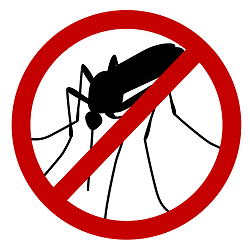 Putting on bug spray every time you go outside is not practical and for little kids and pets, it’s potentially toxic. So how to create a first line of defense for your family and pets?
Putting on bug spray every time you go outside is not practical and for little kids and pets, it’s potentially toxic. So how to create a first line of defense for your family and pets?
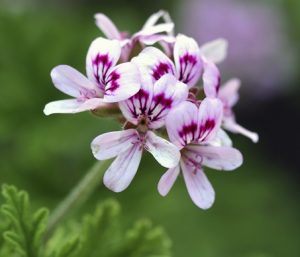 Many families are now turning to naturally-repellent plants to create a garden that drives mosquitoes away! These robust and simple-to-grow plants thrive from spring through the first heavy frost and even grow perennially in some zones. They give off a pleasant lemony, citronella scent when cut, bruised, or even rustling in the wind, creating a natural barrier mosquitoes won’t want to cross. With thick foliage; great shapes; and adaptability, these plants not only drive mosquitoes away but bring beauty to your garden; attract beneficial insects and birds, and even liven up your summer cooking!
Many families are now turning to naturally-repellent plants to create a garden that drives mosquitoes away! These robust and simple-to-grow plants thrive from spring through the first heavy frost and even grow perennially in some zones. They give off a pleasant lemony, citronella scent when cut, bruised, or even rustling in the wind, creating a natural barrier mosquitoes won’t want to cross. With thick foliage; great shapes; and adaptability, these plants not only drive mosquitoes away but bring beauty to your garden; attract beneficial insects and birds, and even liven up your summer cooking!
Here are a few of the basics on growing our two most popular Mosquito Plants. This professionally-written, full-color book offers much more including recipes for making your own bug spray, full planting instructions, and some original garden designs.
Mosquito Plant (Citronella Geranium)
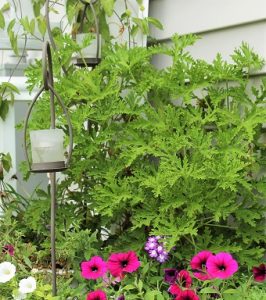 The gorgeous plant shown here is part of the Geranium family, and features thick, mounded foliage of lacy, medium-green leaves and over the season will produce a few pretty pink-purple blossoms. This lovely green foliage makes it a great companion plant, a fantastic container filler, and a nice foundation or edging plant.
The gorgeous plant shown here is part of the Geranium family, and features thick, mounded foliage of lacy, medium-green leaves and over the season will produce a few pretty pink-purple blossoms. This lovely green foliage makes it a great companion plant, a fantastic container filler, and a nice foundation or edging plant.
Like all geraniums, Citronella Geranium (order here) needs direct sunlight for at least six hours per day but can tolerate partial shade. It does best in well-drained, moderately-rich soil but can handle most growing conditions. This large plant can grow up to 48” high and 24” wide so give it plenty of room to grow! Towards mid-summer, the plant will benefit from a trimming of woody branches to keep it nicely shaped. Look for the main central stem and cut it back to the height you prefer – this will promote outward, side stem growth and encourage more blossoms. After you’ve trimmed those branches, add them into your floral arrangements as the thick leaves provide a good structure for smaller flowers and the citronella scent will be released so your bouquet does double-duty as a mosquito deterrent.
Lemon Grass (Cymbopogon citratus)
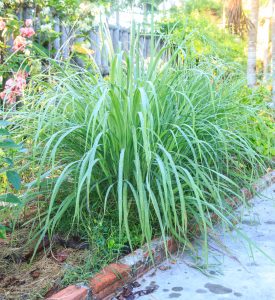 One of this year’s most popular plants, Lemon Grass is often grown as an ornamental and grows in a dense, rounded clump and can grow up to 48” high and 36” wide. The stems grow out of a bulbous base similar to a scallion and this portion is frequently used in Asian-inspired cooking. Lemon Grass (order here) requires the same general planting needs as Citronella Geranium: full sun but can tolerate shade; well-draining, loamy soil but can withstand drought. Similar to chives, Lemon Grass bulbs can be harvested and will regrow if there is enough growing time left.
One of this year’s most popular plants, Lemon Grass is often grown as an ornamental and grows in a dense, rounded clump and can grow up to 48” high and 36” wide. The stems grow out of a bulbous base similar to a scallion and this portion is frequently used in Asian-inspired cooking. Lemon Grass (order here) requires the same general planting needs as Citronella Geranium: full sun but can tolerate shade; well-draining, loamy soil but can withstand drought. Similar to chives, Lemon Grass bulbs can be harvested and will regrow if there is enough growing time left.
Lemon Grass is perennial only in zones 9 through 11 and must be treated as a tender annual in all other climates and will grow into late fall if protected from late-season frosts. When mature, this plant benefits from division as it can become rootbound. Just slice into the crown with a sharp knife or spade and separate each root clump. Replant in a pot or in the ground and feed and water until established.
How to Repel Mosquitoes
Both plants’ leaves give off a natural citronella scent when cut, bruised, or even rustling in the breeze. To repel mosquitos, plant near high use areas such as patio borders, deck containers, play areas, or near entryways. When you walk by the plant, roughly brush or rub leaves together to release a burst of scent.
 Add cut branches to floral arrangements and place around your sitting areas for extra evening protection. Dry the leaves in the sun on a window screen, then crush them and sprinkle around the deck. You can also steep the leaves to make a natural bug spray but test first on a small patch of skin.
Add cut branches to floral arrangements and place around your sitting areas for extra evening protection. Dry the leaves in the sun on a window screen, then crush them and sprinkle around the deck. You can also steep the leaves to make a natural bug spray but test first on a small patch of skin.
In the Kitchen
 Geranium leaves and flowers can be added fresh or candied to desserts to lend a lemony flavor. Leaves can be brewed into tea, steeped to create a lemony liqueur or flavored vinegar, made into jellies and sauces, added to butter or ice cream for a subtle flavor, and used as a garnish.
Geranium leaves and flowers can be added fresh or candied to desserts to lend a lemony flavor. Leaves can be brewed into tea, steeped to create a lemony liqueur or flavored vinegar, made into jellies and sauces, added to butter or ice cream for a subtle flavor, and used as a garnish.
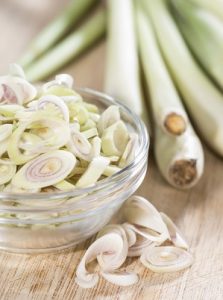
Lemon Grass is usually ready for harvest near the end of the growing season. Pick individual stalks when they’ve grown to ½” thick and the plant is at least 12” tall. Just cut off at ground level with a sharp knife or twist off sideways from the main root crown (similar to picking rhubarb.) After picking, remove outer, woody layers and leaf tips as they can be bitter. The bulbous portion and lower thicker stalks can be chopped like a scallion and added to stir-fries. The leaves can be dehydrated and used as a ground herb, as a whole dried leaf, or added to oils or vinegar for a lemony infusion. Fresh leaves can be bundled and submerged in hot water to make tea. The whole stalk makes a great skewer and adds lemony flavor to your shishkabobs.
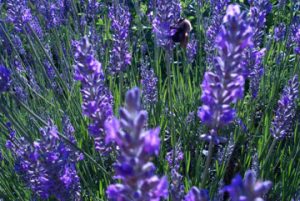 Many more plants – lantana, lavender, and creeping lemon thyme, just to name a few — help deter mosquitoes and you’re probably already growing them in your garden! It’s not too late to start growing your Mosquito Repellent Garden. We’re well stocked with all the plants featured in the book including our popular Mosquito Trio of Citronella Geranium, Lemongrass, and Lantana. And we ship everything Priority Mail so you’ll get it fast!
Many more plants – lantana, lavender, and creeping lemon thyme, just to name a few — help deter mosquitoes and you’re probably already growing them in your garden! It’s not too late to start growing your Mosquito Repellent Garden. We’re well stocked with all the plants featured in the book including our popular Mosquito Trio of Citronella Geranium, Lemongrass, and Lantana. And we ship everything Priority Mail so you’ll get it fast!
You don’t have to pour on the bug spray to protect your family from mosquitos and the scary diseases they carry. Now is the time to start planting a yard that keeps the mosquitos away for the summer!